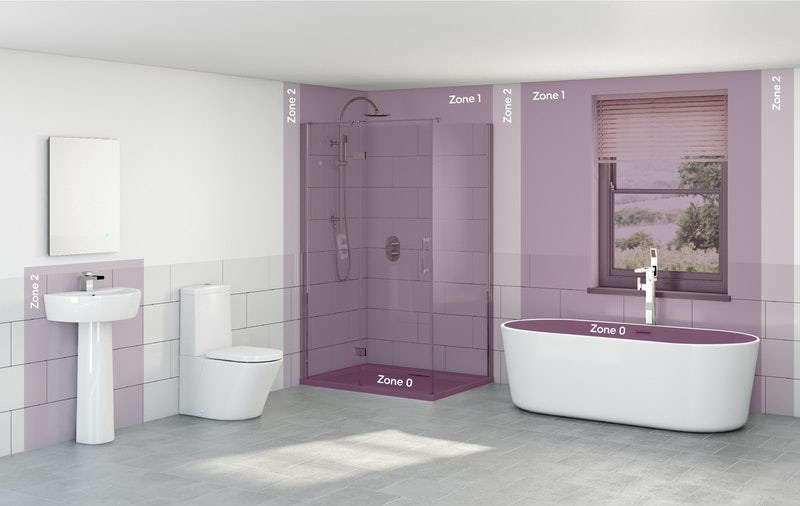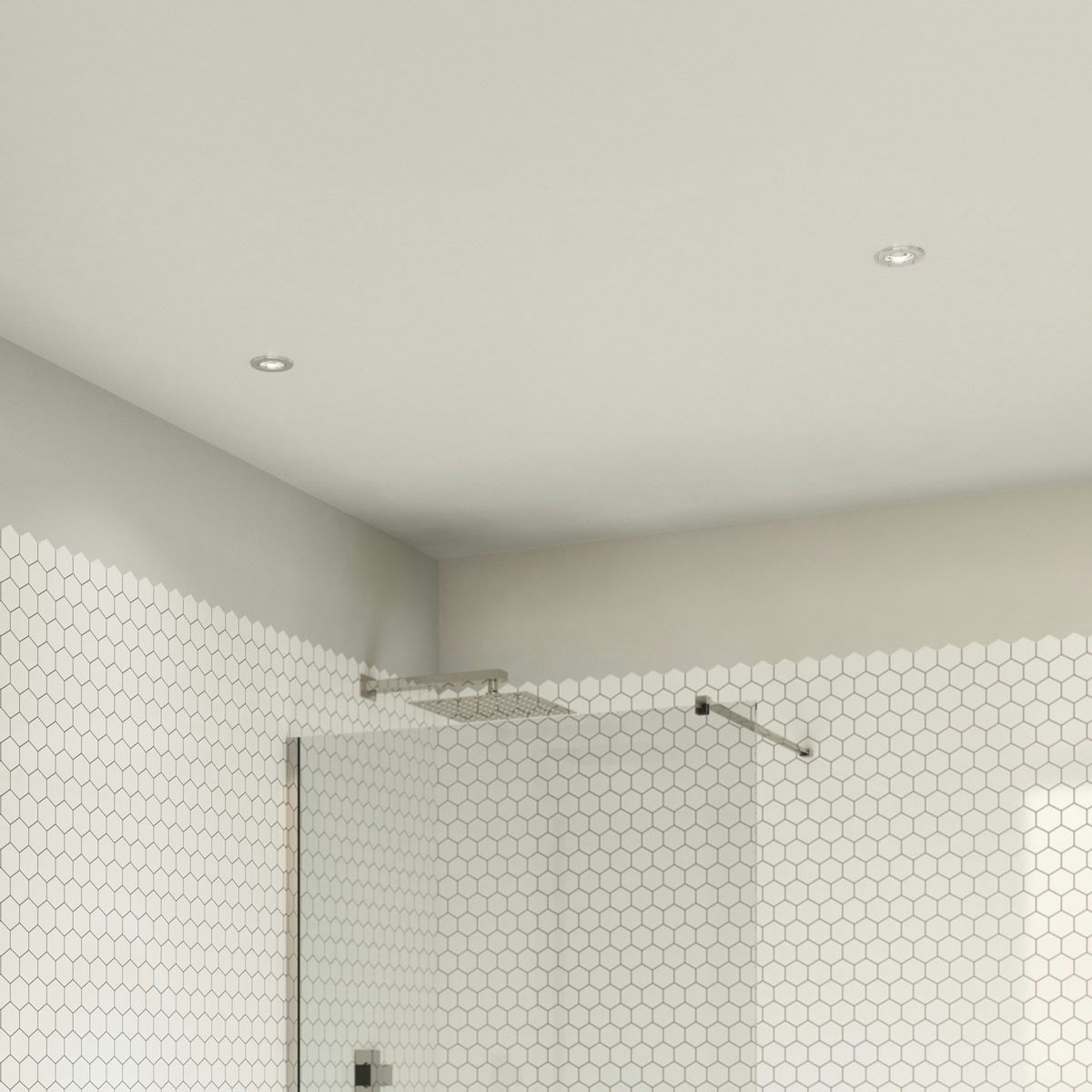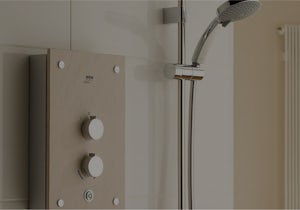Bathrooms are considered to be a special location for electrical installations because they have an increased risk of electric shock for the users, due to being so close to water.
Before we start…
We have to make clear that this article is for informational purposes only—it is certainly NOT a "how to" or DIY guide. You should NEVER, ever attempt to install any electrical appliance unless you’re a qualified electrician. We would strongly recommend that you use an electrician registered with one of the government-approved schemes.
The best way to find an experienced and qualified electrician is by getting recommendations from friends and family. Or, you could post a job to MyBuilder.com where you'll discover recommended electricians in your area.
Electrics in the bathroom
Electrical contractors will make bathroom installations as safe as possible by carefully following wiring and building regulations, choosing specially designed equipment and employing a good “splash” of common sense (if you pardon the pun!).
Everyone knows the types of electrical products that can be found in bathrooms: lighting, showers, fans, heaters, shaver sockets and towel rails. But what you need to be aware of are the rules for installation of these products that contractors must follow and how, using certified products, they comply with the regulations.
Regulations
The wiring regulations in the UK state that:
“All fixed electrical installations in dwellings must legally comply with BS 7671:2008 ‘Requirements for Electrical Installations.”
This standard provides guidance on design, installation, testing, verification and certification of electrical installations.
Within this standard, section 701 divides a bathroom into different zones which take into account windows, doors, walls, ceilings and partitions based on a perceived level of risk.
UK bathroom electrical zones
Each of the bathroom electrical zones illustrated below has specific requirements regarding the electrical equipment that can be installed and used in that zone.

Zone 0
This is the area occupied by elements such as the bath or shower. No devices are allowed in this zone, apart from suitable equipment or insulated pull cords. The minimum ingress protection rating here is IPX7.
Zone 1
This is the area above Zone 0, extending up to a height of 2250mm. Only separated extra low voltage (SELV) devices are allowed in this zone, but any transformer must be located beyond zone 2. The minimum ingress protection rating here is IPX4.
Zone 2
This is the area above or either side of zone 1, extending up to a height of 3000mm and extending horizontally to 600mm. Only separated extra low voltage (SELV) devices are allowed in this zone, but any transformer must be located beyond zone 2. The minimum ingress protection rating here is IPX4.
Zone 3
When the size of bathroom extends beyond zone 2, portable equipment is allowed, however, they should be positioned so that their flex length doesn’t enable them to be used in zone 2.
IP (Ingress Protection) ratings explained
You should only use electrical equipment such as lights or showers in your bathroom if it has an IP rating. IP stands for Ingress Protection and the letters IP are always followed by two numbers. The first number denotes the degree to which the product is protected from solid particles and the second number denotes the degree to which it is protected from moisture. The higher the numbers, the better the protection.

Examples:
A light with a rating of IP44.
- 4 = Protected against particles no greater than 1mm in size.
- 4 = Protected against water splashes.
A specialist bathroom TV with a rating of IP65.
- 6 = Dust-tight. Fully sealed and protected against any contact with dust.
- 5 = Protected against water jets.
See our bathroom lighting buying guide for more information.
Bathroom electrical zones: Further considerations
At this point, again, we simply have to state that you should never, ever attempt any electrical DIY yourself unless you are a qualified electrician. Got that? Good… let’s move on….
Here are some things to bear in mind:
Sockets
The use or installation of sockets is not allowed in bathrooms or shower rooms unless they can be fitted at least 3 metres from the bath or shower. The only exception to this is a shaver-supply unit.
If you do have an electrical shaver point installed, it must be a safe distance (in metres) from the bath or shower to avoid splashes.
Lights
When choosing the style of light you have installed in your bathroom, it is recommended that you pick enclosed ceiling lights instead of the ones that hang down.
If you do have light fittings, that are not enclosed, they must be out of reach of anyone who is still wet from being in the shower or bath.
A typical everyday light switch is a danger due to the potential dampness and wet hands that might come into contact with it. A ceiling-mounted pull cord is the safest option.
Enclosed lighting, like these downlights, is recommended for bathrooms
Heaters and towel rails
When it comes to keeping your bathroom warm, central heating is possibly the safest option. However, an electric heater can be used as long as it is fitted a safe distance from the bath or shower.
Electric and gas water heaters can be installed in a bathroom providing they have been fixed and permanently wired, they can also be powered by a socket that’s been fitted 3 metres away from the bath or shower. The ideal way to control an electric heater is by fitting a pull cord or switch outside of the bathroom.
Showers
An electric shower must be supplied on its own circuit directly from your fuse box. Find out more about the type of tradesperson you should hire to fit an electric shower.
Further information
If you’d like to do some further reading about using electrical products in your bathroom, take a look at these handy websites:










